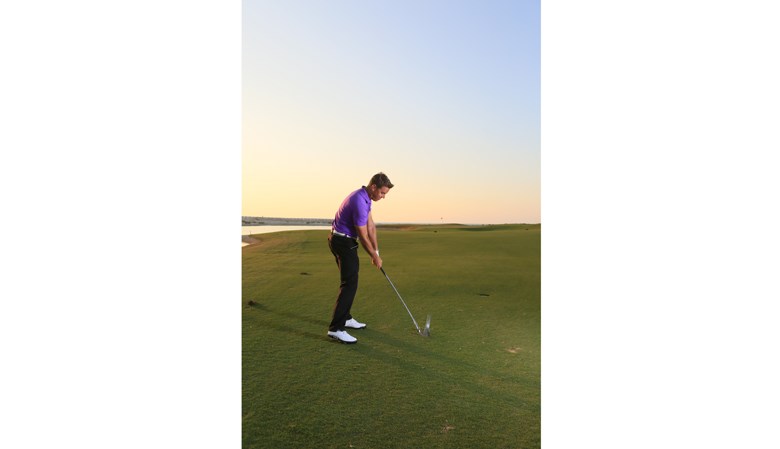Task leads to technique
Published:
If I asked you to hit a fence post with a sledgehammer, you would naturally strike with a vertical movement. If asked to beat a carpet on a washing line, you’d do so in a horizontal plane. Two different tasks will lead to two different techniques – without conscious thought. Children skim pebbles across ponds without formal lessons, or a copy of “Pebble Skimming World” to guide them. Yet, a photo sequence of a child skimming reveals a complex set of motor skills. For me, “improvisation is the greatest teacher” – with Butch Harmon a close second! Golf is just the same – the task of creating a shot, will lead to sound technique.
So here’s the deal and my promise to you; if I teach you seven specific shots (assuming good grip and posture) you’ll improve your swing with minimum thought. It worked for Lee Trevino and Seve Ballesteros – it will definitely work for you!
1. LOW SHOT
Hit 6-irons off a tee. Your shoulders, arms and club form a Y-shape. Hit little shots while maintaining that shape and gradually increase the power until the ball flies 75 to 100 yards. Keeping the Y-shape constant limits the backswing to shoulder height and ensures minimal forearm rotation – at the top of the half backswing your forearms will have rotated around 45° from the address. The task of creating power for these low shots teaches you a half swing.
2. DRAW-SPIN SHOT
Continue the Y-shape half swing. Now start to hit the ball further by graduating to a stronger backswing and rotating your forearms through 90° going back. Actively use your right hand in the downswing to create draw-spin. If you can put top-spin on a tennis ball, there’s no reason for you not to put draw-spin on a golf ball. The task of creating a draw shot teaches you a three-quarter swing.
3. FADE-SPIN SHOT
Keep hitting three-quarter 6-irons around 130 yards with the same backswing, but delay your forearm rotation in the downswing. Create fade-spin like you would create backspin in table tennis by delivering an open blade at impact. The task of improvising a fade-spin shot will modify the shape and length of your through-swing.
4. HIGH SHOT
To hit the ball higher, you must cock your wrists to a full 90° in the backswing and fully re-cock them in the follow-through. The task of hitting a higher shot teaches you to make full swing.
5. CHIP SHOT
You actually learnt this shot in the first task. Working the Y-shape to and fro there was zero wrist hinge. Now improvise shots from 75 yards and in. Take note, non-wristy does not mean stiff-wristed – it means no wrist cock. Your job is to send the ball towards the target – it’s the club’s job to control the trajectory. The task of chipping shots the correct distance teaches the correct length of backswing.
6. PITCH SHOT
You’ve also already learned the pitch shot in task 6. In tasks 1, 2 and 3 you taught yourself a three-quarter swing. By learning a high shot you improvised wrist cock in the backswing and through-swing. So, when pitching (and out of sand) you are required to mix wrist cock to shoulder turn like in a high shot. The task of hitting high pitch shots – from 50 to 120 yards – teaches you a safe and orthodox pitching technique.
7. PUTTING
Been there, taught you that and bought the polo shirt! There was zero wrist cock and almost no forearm rotation in task 1 – only shoulder movement. There is also zero forearm rotation in putting. You can work on your stroke and never become a good putter. Sound technique requires a neat and deliberate backswing, smooth acceleration, a square face at impact and judgement of pace. The correct task gives all those qualities for free. The task of rolling the ball will improve your putting technique.
Shots lead to swing technique
If Tiger Woods, Jim Furyk, you and I were asked to hit a low draw shot to a flag 160 yards away, despite huge swing differences, we’d be forced to do the same thing with the shaft, clubface and ball to produce it. We can’t categorically state the swing controls the shot, but we can definitively state the shot controls the swing.



